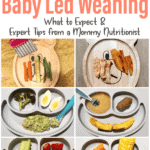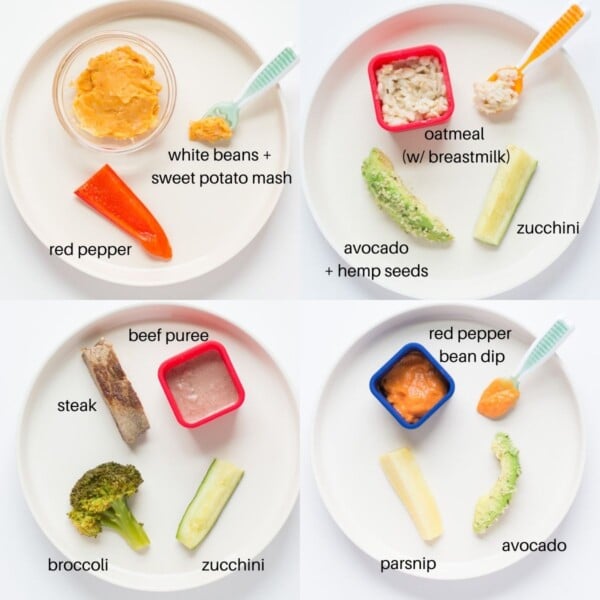This post may contain affiliate links. Please see our disclosure policy for more details.
In this comprehensive guide, you will learn the basics of baby-led weaning (BLW), how to get started, tips to help make your weaning journey fun and successful, as well as healthy recipes for babies 6 months and up.
Table of Contents
- What is Baby Led Weaning?
- Benefits of Baby-Led Weaning
- When to Start Baby led Weaning
- Is your baby 6 months old and up?
- BLW – How to get Started
- Baby-Led Weaning Tips
- Best First Foods for Baby Led Weaning
- How to Prepare Foods for BLW
- Foods to Avoid
- Is there a higher risk of choking with Baby Led Weaning?
- How to Introduce Potential Food Allergens
- Baby Led Weaning Foods – 6 months
- BLW 8-9 Months
- Baby Led Weaning – 12 Months and Beyond
- Baby Led Weaning and Purees
- BLW Recipes
- Baby Led Feeding Journey Program
What is Baby Led Weaning?
Baby led weaning, BLW, or sometimes referred to as baby-led feeding is a feeding method popularized in the United Kingdom by Gill Rapley that encourages babies to feed themselves, explore, set the pace and to be in full control of what and how much to eat.
From the start, babies are offered finger foods that are soft and easy to hold. And if you’ve heard that blw babies cannot have purees, this is not true! You can absolutely serve purees, but what’s important is that you allow your baby to feed themselves.
Table of Contents
- What is Baby Led Weaning?
- Benefits of Baby-Led Weaning
- When to Start Baby led Weaning
- Is your baby 6 months old and up?
- BLW – How to get Started
- Baby-Led Weaning Tips
- Best First Foods for Baby Led Weaning
- How to Prepare Foods for BLW
- Foods to Avoid
- Is there a higher risk of choking with Baby Led Weaning?
- How to Introduce Potential Food Allergens
- Baby Led Weaning Foods – 6 months
- BLW 8-9 Months
- Baby Led Weaning – 12 Months and Beyond
- Baby Led Weaning and Purees
- BLW Recipes
- Baby Led Feeding Journey Program
Benefits of Baby-Led Weaning
Simply being able to enjoy mealtimes together as a family and sharing the same food (with slight modifications for the baby) from the beginning are compelling reasons to embark on this self-feeding journey. However, the potential benefits don’t stop there!
- Better appetite control and potentially less health and weight concerns in the future. Just like how babies control the amount of milk they eat when breastfed, continuing to allow your child to be in control of how much food she eats will further promote increased attunement and responsiveness to their innate hunger and satiety cues. Not to mention, when not pressured to eat a set amount or specific food, it boosts confidence and enjoyment during mealtimes.
- May reduce picky eating down the road. Research shows that there is a time-sensitive “window of opportunity” between 6-12 months of age where babies are most inclined to taste and try new flavors and textures. Take FULL advantage of this period because it won’t stay this way forever. Around 2 years of age is when fear of new foods, or neophobia starts to peak and your once champion eater may become much more resistant and unwilling to trying new foods.
- May promote healthier eating behaviors. By introducing a wide variety of foods during the first year of life, you’re shaping their food preferences and healthy eating habits that can last a lifetime!
- Helps improve fine motor skills and hand-eye coordination. As your baby explores food through sight, touch, smell, and taste, it’s not only invaluable for sensory development but also for developing hand-eye coordination, dexterity, and chewing skills.
- May make mealtimes easier – you don’t have to buy and/or make baby food and become a short order cook. You can also eat alongside your baby rather than spoon-feeding at every meal, which can be quite time consuming and frustrating.
When to Start Baby led Weaning
Here are some of the signs of readiness to look for:
- Able to sit with minimal support for at least 20-30 seconds
- Has good trunk, head, and neck control
- Shows interest in food
- Fading tongue thrust reflex (causes the tongue to stick out when touched)
For more detailed information, be sure to grab my FREE starter guide that will help make sure you start introducing solids at the most optimal time. As a bonus, you will also receive a USDA-approved guide on starting solids that summarizes everything included in this post.
Click below and print the handout so you can refer to it easily.

Is your baby 6 months old and up?
Learn all the secrets to starting solids safely while optimizing nutrition!
BLW – How to get Started
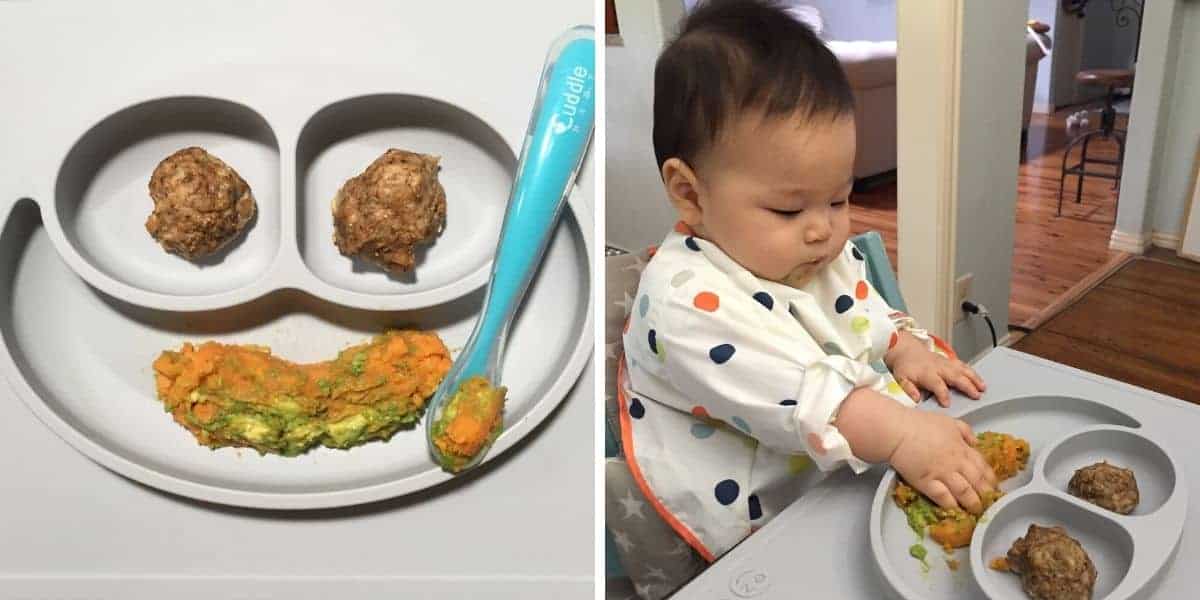
- Pick a day that best suits you and your baby and a time of day when you are both relaxed and not on a time crunch.
- Make sure your baby is sitting upright before you begin.
- Make sure your baby is comfortable. Full diapers, pain due to teething or other illnesses (e.g. sore throat or ear pain, constipation, etc.) can all hinder your child from eating.
- Sit on your hands! This is what I had to do to stop myself from trying to clean up or prevent the mess from happening.
- Start with just one meal a day. You can decide the time of the day depending on when your baby seems most interested in food.
- Offer solid foods that are the appropriate size and texture.
- Eat with your baby! They learn primarily by example so show them how eating is done 😉
- Practice responsive feeding! This basically means following your baby’s hunger and fullness cues regardless of how much food is left on the plate.
- Let your child get messy! Playing, smearing, smushing…they are a HUGE part of learning to self-feed. More on this below.
Baby-Led Weaning Tips
- Have all the BLW essentials ready – including bibs, suction plates, baby spoons, high chair, etc.
- Keep expectations in check – Most likely, your baby won’t eat much of anything during the first days or weeks. Before giving up, remember that self-feeding is a new skill that they NEED to learn.
- Be consistent and persistent. Don’t give up too early. It’s our job to provide them with PLENTY of opportunities to practice. And remember. Breastmilk or formula will continue to be their primary nutrition during this transition time.
- Less is more! Seeing too much food can’t be overwhelming to your baby and can result in a lot of food waste. Just 2-3 pieces of food is plenty to start with.
- Stay calm. There will be lots of gagging. Let your baby work through it. Keep reminding yourself that this is a safety mechanism and that it’s a big part of the learning process. If your baby sees you panicking they will too.
- Don’t decrease the amount of milk feedings when first starting. Breast milk or formula will continue to be their primary nutrition. Hope this helps you to relax when not much food gets eaten. Again, let them explore and get messy!
- Listen to your intuition – there will be babies who just won’t eat because of actual feeding issues. There may be swallowing issues, oral-motor or sensory problems, food allergies, or digestive difficulties.If you suspect that something just isn’t right, act on your intuition. It never hurts to seek professional help!
- While it’s our natural tendency to focus solely on the food, I want to encourage you to consider the joy and adventure that comes from exploring all the different foods, which is such an awesome thing to teach your child!
Best First Foods for Baby Led Weaning
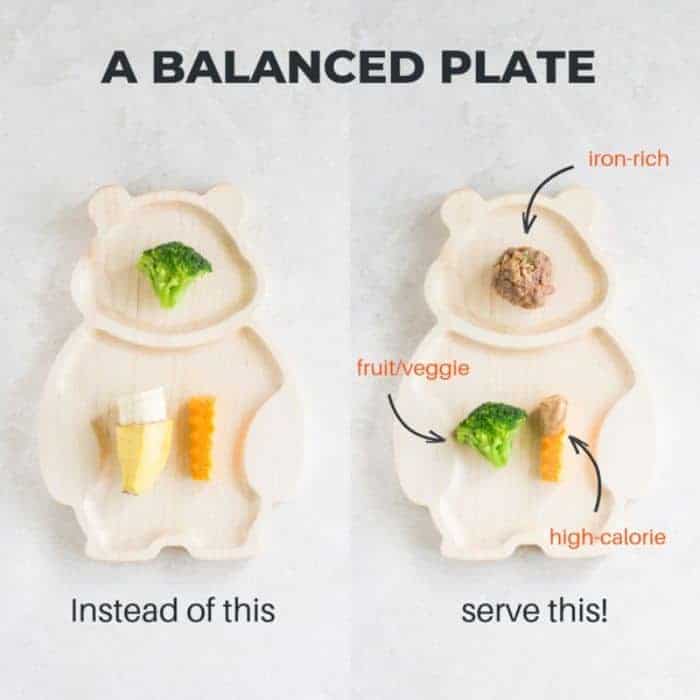
It’s about quality not quantity, and here is a general formula for building a well-balanced meal!
Iron-rich Food + a high-energy food + fruit or vegetable
Listed below are super in-depth posts on how to prepare and serve these specific foods to your baby. And for more tips and answers to the most commonly asked questions, be sure to check out my “Best BLW First Foods” post.
Note that there will be many foods that fit into more than one category. For instance, Sweet potato is a vegetable but it’s also a high-energy food and lentils is iron-rich but also fall inn the high-energy category.
Simply decide which category you want the food to count as for that specific meal and fill in the rest of the categories on the plate.
Iron-rich Foods for Babies
For more, check out Best Iron Rich foods for babies
And if you want to start with cereal, here are my top iron-fortified cereals

How to Cook Chicken for Babies

How to Cook Tofu for Baby Led Weaning

Cooking Beans for Babies (3 Methods)
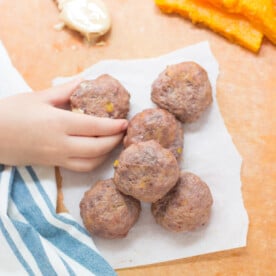
Healthy Baby Meatballs

How to Cook Salmon for Babies (3 ways)

How to Cook Shrimp For Babies

Eggs for babies – Curried Egg Salad
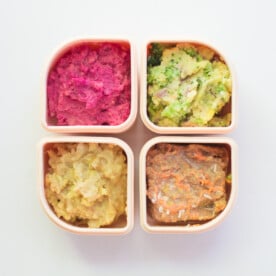
Lentils for babies
High-energy food

Easy Yogurt Ideas for Babies
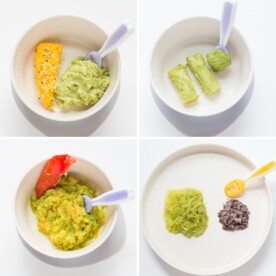
Avocado for Babies
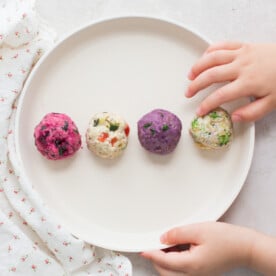
Homemade Baby Oatmeal
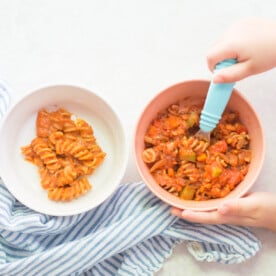

How to cook quinoa for babies

Banana Chia Pudding
Fruit or vegetable for Baby Led Waning
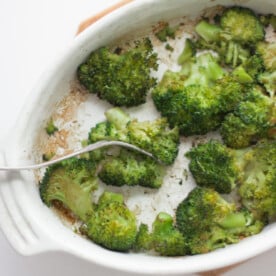
Broccoli for baby led weaning

How to Cook Spinach for Babies
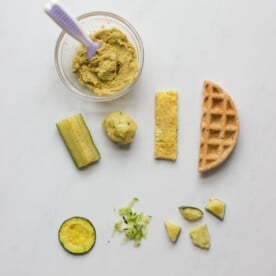
How to Cook Zucchini for Babbies
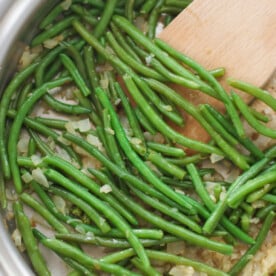
How to Cook Frozen Green Beans
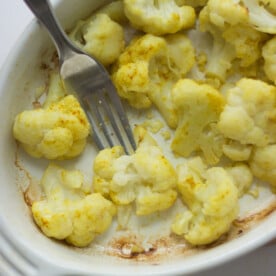
How to Cook Cauliflower for Babies
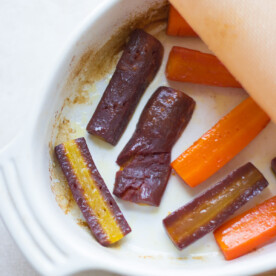
How to Cook Carrots for Babies
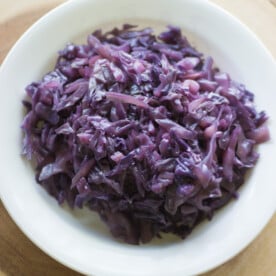
How to cook cabbage for babies
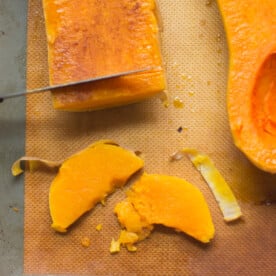
How to cook butternut squash for babies
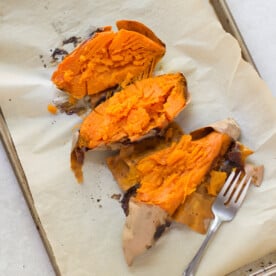
How to Cook Sweet Potatoes for Babies
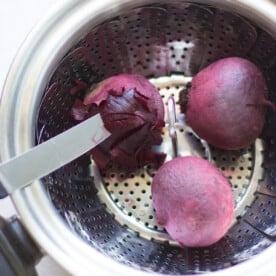
How to Cook Beetroot (3 Easy Methods)
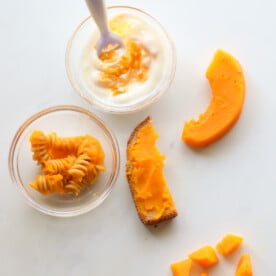
Pumpkin Puree for Babies
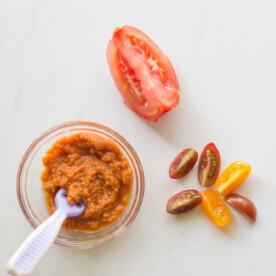
How to Cook Tomatoes for Babies
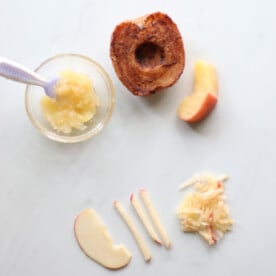
Apples for Babies
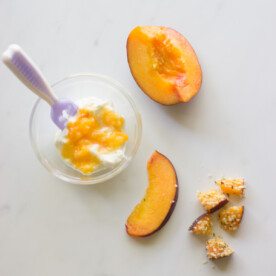
Peach Puree
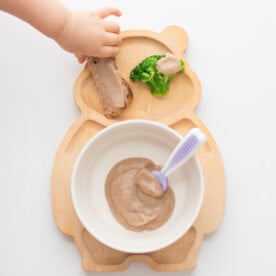
Pear Hummus for Babies and Kids
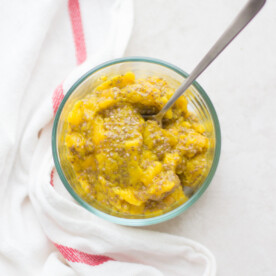
Mango Chia Seed Jam for Babies and Kids

Strawberry Puree

Blueberry Puree for Babies

Kiwi Puree
How to Prepare Foods for BLW
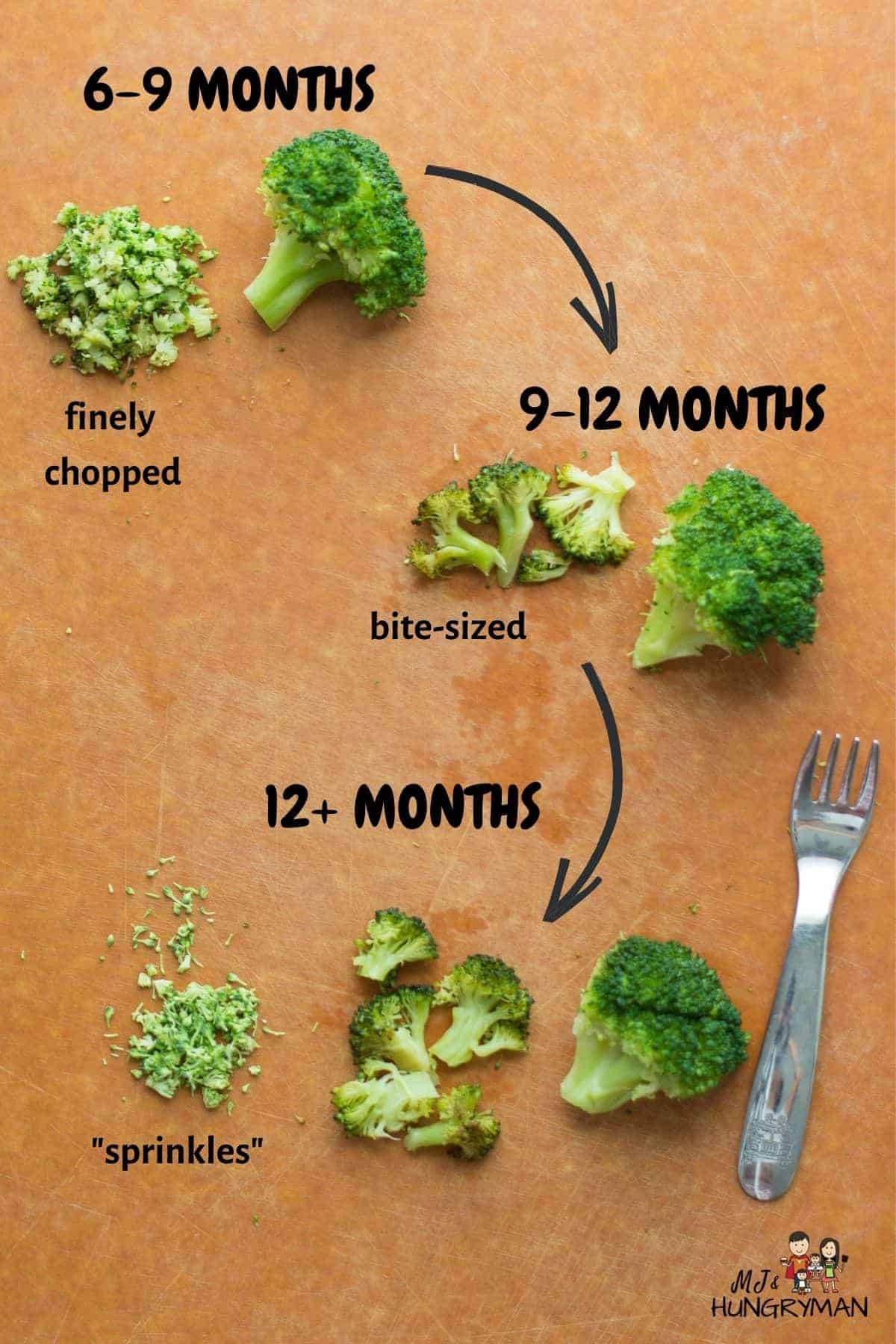
It is very important that the size and texture of the finger food are age-appropriate to minimize the risk of choking.
Here’s an in-depth guide on how to serve finger foods for 6-8 months, 9-11 months, and 12 months and beyond.
Foods to Avoid
According to the American Academy of Pediatrics, here is a list of foods you must avoid serving:
- Hard or crunchy texture – raw fruits and vegetables, whole nuts, crackers, popcorn, etc.
- Sticky texture – a glob of peanut or nut butter
- Cow’s milk – it’s fine to add to recipes but shouldn’t be offered as a drink
- Added salt
- Added sugar
- Honey – can lead to botulism
Is there a higher risk of choking with Baby Led Weaning?
Choking. This is probably one of our greatest fears when it comes to introducing solid food, right?
First, research shows that infants following a baby-led weaning approach to feeding does not appear more likely to choke compared to infants following the traditional spoon-feeding purees approach.
It’s important to know that there’s a great distinction between choking and gagging.
Gagging
Gagging is quite a common occurrence due to the gag reflex being far forward in younger babies. It is a good thing as it serves as a safety mechanism to prevent choking.
Again, gagging is a normal and expected part of learning to chew and swallow. Here’s a video of my son gagging.
When a baby is gagging, they may cough, make audible noises, go red in the face, have watery eyes, or have a look of discomfort. Although frightening for the parents to watch, the babies aren’t actually bothered much by this.
You can lean your baby slightly forward but don’t try to fish out the food from the baby’s mouth with your finger. You may actually end up pushing the food further back!
The biggest piece of advice I want to give you is this – Whatever you do, don’t let your child sense your fear. This is the time to put your best face forward and fake it till you make it! Stay as cool as a cucumber, smile, and encourage them to work through it.
Choking
On the other hand, choking occurs when food obstructs the airway and will look drastically different from gagging. It’s unlikely the baby will make audible sounds, but you will see it.
Your baby may gasp for breath,
If all the safe self-feeding practices are in place, including making sure
Regardless, it’s highly advised for the parents to take the infant CPR course.
How to Introduce Potential Food Allergens
There’s great amount of research that shows introducing peanut-containing foods and eggs early and often reduces the risk of developing allergies for these foods.
Therefore, experts, including the American Academy of Pediatrics and World Health Organization, recommend introducing potential food allergens early and often.
Here is a list of the top 9 food allergens as well as guidance on how to introduce them strategically and safely.
Baby Led Weaning Foods – 6 months
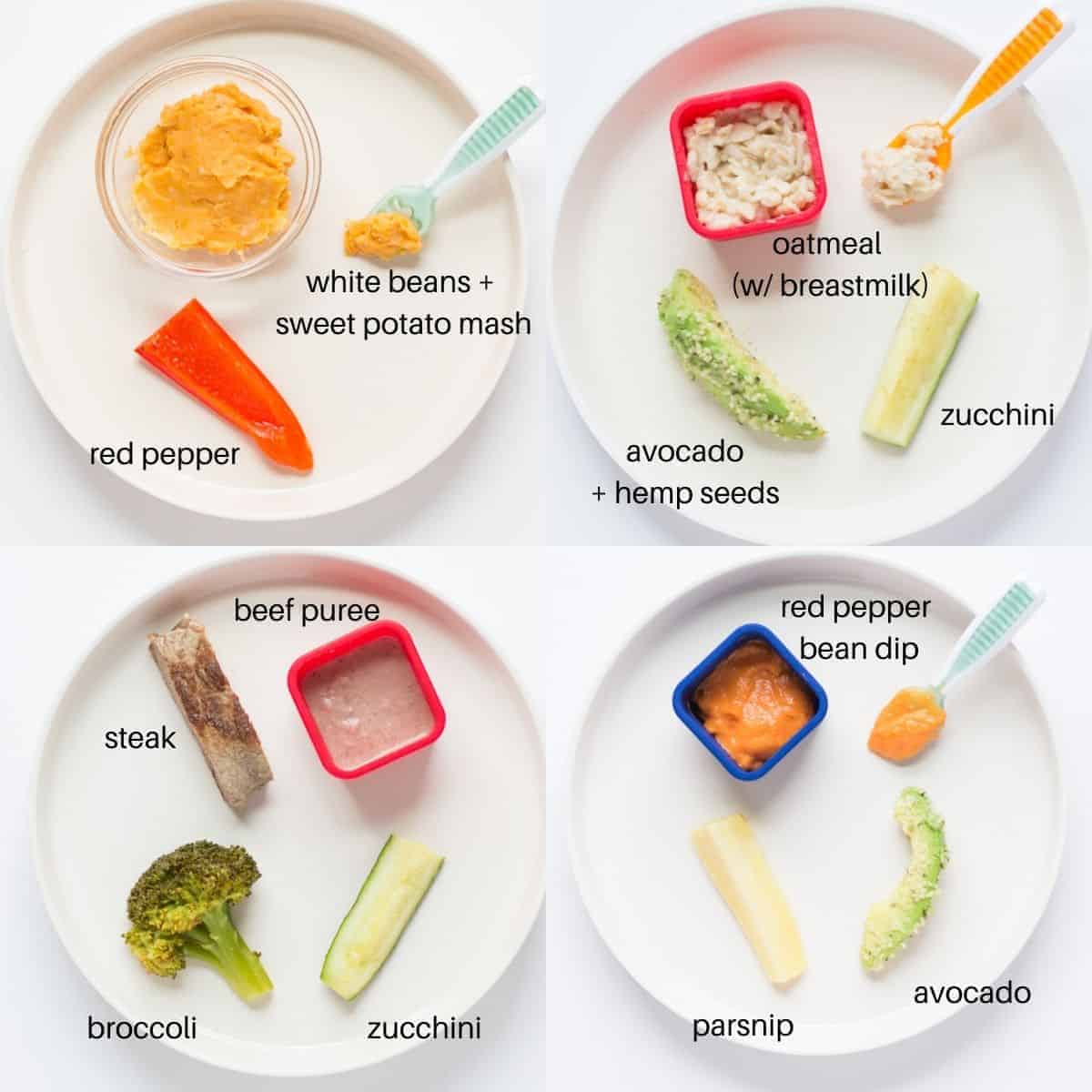
Your baby may love self-feeding right from the start (lucky you!) or may find playing with and throwing food around more enjoyable (yup, that was us). And I remember feeling so discouraged and confused.
Before you start being hard on yourself, let’s take a step back and consider the situation through the lens of your baby who has solely been drinking milk up to this point.
They have absolutely NO idea what to do with the food that’s presented to them not to mention it requires much hand-eye coordination and fine motor skills.
All this to say, Most likely your baby will not eat much, if anything at all, at first. Consider this time a learning experience, to recognize your baby’s hunger and fullness cues and to respond appropriately rather than coming to the table with the agenda of “I need my baby to eat everything on this plate.”
These first days, weeks are all about building the skills and confidence necessary to self-feed and less about consumption.
That WILL come if you persist and continue to offer solid food AND provide a safe, positive environment for your baby to EXPLORE. That means no matter how frustrated and anxious you may be, try to smile and feign indifference.
Babies are so keen to a parent’s energy. Encouragement and support from their most trusted person is what they most need!
Continue to offer around the same volume of breastmilk and/or formula. As your baby starts to eat more, their milk intake will naturally decrease gradually.
Best Foods for 6 month old with Meal Plan
BLW 8-9 Months

By this time, you should be working towards having two meals a day. Some suggest three meals at this age, but it depends on your baby. There’s no need to force your baby to eat three meals if they’re not interested or hungry for it.
Here’s everything you need to know to feed your 8 to 9 month old baby, including how much milk and solid food to offer as well as best foods.
This is also the time when they start to develop their pincer grasp and so you will be able to cut the food into bite-sized pieces.
Baby Led Weaning – 12 Months and Beyond
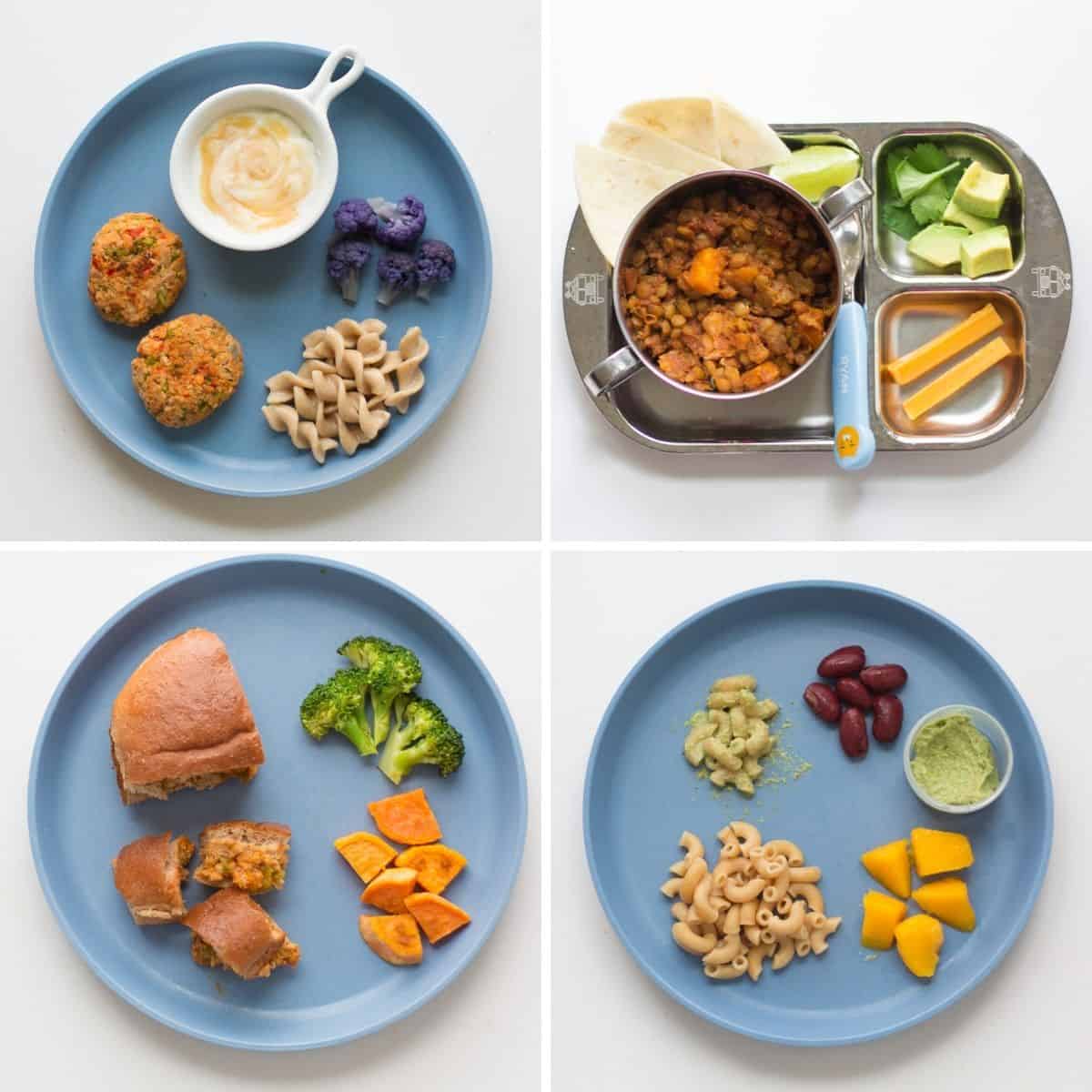
At this stage, your baby is likely eating 3 meals and 1-3 snacks (depending on their appetite) per day. They are handling almost all textures and have more control over getting food into their mouth.
Feeding a one year old can also be very challenging, and you may notice a change in your baby’s eating. Perhaps you may even start to believe they are turning into a picky eater.
But let me assure you. This is a normal and expected part of development!
Here is everything you need to navigate through this tricky phase of feeding a toddler as well as easy and well-balanced meal ideas.
Baby Led Weaning and Purees
If you heard that you cannot serve purees when doing BLW, let me assure you, you CAN!
The main goal in BLW or weaning is to introduce your baby to as many textures and flavors as possible from early on and pureed is a texture!
It is perfectly safe to offer BOTH purees/mash and finger foods. You just don’t want to get stuck offering ONLY purees.
Simply preload purees onto a spoon and place on the tray or table or directly in their hand. And follow your baby’s lead.
And if you started with purees, here is how to move forward with texture.
BLW Recipes
As mentioned, one of the benefits of doing baby-led weaning is that you can serve family meals from the start! There is no need to make separate meals for your baby – just one meal for the whole family.
That sounds great, but you may be wondering – what about the sodium? added sugars? texture? There’s no way the rest of the family is going to eat the meal after taking all these things into consideration.
Well, I’ve got great news for you! Here is a master list of baby-led weaning recipes that are packed with flavor and nutrition and are perfect for all ages.
Baby Led Feeding Journey Program

Do you want to minimize picky eating and set a solid foundation for a lifetime of healthy eating habits?
Check out this 3 month mastering self-feeding program! It’s the closest thing to me being in your kitchen
After thinking long and hard about how I can make your weaning journey as easy, safe, and enjoyable as possible, I’ve decided to create the ULTIMATE resource for your baby’s eating journey for the first 3 months.
This program is complete with cooking videos, pics and videos of baby’s plate, and videos of my baby eating to help give you the confidence and reassurance that YES! your baby is capable of handling everything you’re about to serve. In this resource I’m walking you through everything you need to know about feeding for the first three months.
It’s exactly what I used to wean my daughter! OH I can not WAIT for you to get in the kitchen with me and have fun learning and exploring this incredible world of food with your baby!

